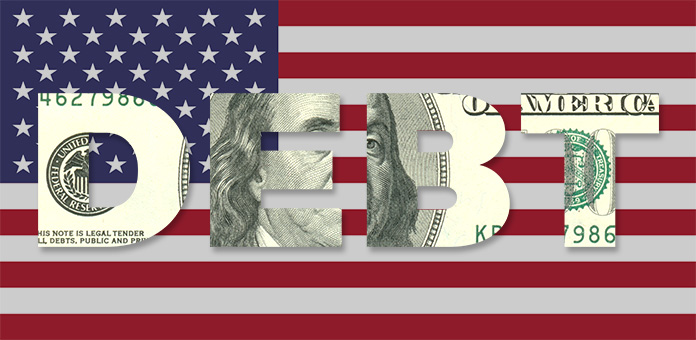
With the world now in the maturing stages of the “Great Fiat Currency Experiment,” there is growing debate about the consequences of unsustainable government deficit spending. The focus of the argument is whether the outcome of the staggering levels of global debt will be as benign as the economic theories that created it or as bleak as a situation standardly is when a bill is due and the borrower is broke. 1
While it is true that government debt can be beneficial when used to pay for long-term infrastructure and investment, such spending is not the primary source of debt today. 2 The use of monetary policies like quantitative easing has been the main tool for dealing with the economic meltdown of 2008 and its repercussions. As a result, deficit spending has continued and debt soared. Many industries have become addicted to the cheap money such policies have provided. 3
When Bills Go Unpaid
Many proponents of deficit spending argue it is not like debt between individual citizens. When businesses or families can’t pay their bills, they go bankrupt. However, economists, such as Paul Krugman, argue that governments can issue more debt, even if it requires paying higher interest to those who buy its bonds and paper financial instruments. Further, they argue more debt is preferable to slow economic growth or deflation. 4
Unfortunately, this attitude has produced countries, such as Greece, Venezuela and Portugal, where there is no ability to service outstanding debt. Other countries have faced overwhelming debt and sought bailouts or defaulted. Even more are now approaching the tipping point in their levels of deficit spending. 5
Uncontrollable U.S. Debt
Over the past decade, the U.S. has sanguinely doubled its debt to nearly $20 trillion. Moreover, it faces between $150 trillion and $200 trillion in unfunded liabilities—amounts that are double the combined net worth of every American household and non-profit organization in the U.S.! That includes all assets, such as private businesses, corporate stocks, real estate, personal goods, and all savings.
The level of debt is now doubling every eight years, and the service on that debt will increase dramatically as interest rates rise. 6 Already, the debt equals more than $158,000 for every household and is more than five times the annual federal revenue from taxes and all other sources. The government now pays more than $250 billion in annual interest, an amount that will approach a trillion dollars if interest rates rise to 4 or 5 percent. 7
While there is no near-term expectation that the U.S. will have a problem paying its debt, the expense of its reliance on deficit spending could reverberate throughout the economy: slower wage growth, higher costs of living, reduced fiscal flexibility, and a potential financial crisis like we’re seeing in Europe and elsewhere. 8
Finding a Safe Haven
Ironically, one frequent argument for government debt is that it offers a safe haven investment for individuals and businesses. However, when those government bonds and debt instruments become suspect, as they have in many countries, wise investors move to true safe haven investments, such as gold and silver.
Over the long term, even the U.S. will be forced to deal with market realities rather than utopian economic theories. Time and again, those who buy gold have smirked at theorists who think they can ignore basic financial realities. With a debt level that simply cannot be repaid, the correlation of gold prices to national debt is understandable. With more debt assured, it is reasonable to expect higher precious metal prices. 9
Additional Sources
2 – http://www.investopedia.com/articles/economics/10/national-debt.asp
3 – http://time.com/4217068/global-debt-crisis/
4 – http://www.nytimes.com/2015/02/09/opinion/paul-krugman-nobody-understands-debt.html?_r=0
5 – http://www.forbes.com/sites/mikepatton/2014/09/29/the-seven-most-indebted-nations/#75bc535e2cb3
6 – http://www.silverseek.com:8080/article/silver-and-train-wreck-16106
7 – http://www.justfacts.com/nationaldebt.asp
8 – http://www.fixthedebt.org/everything-about-the-debt
9 – http://inflation.us/golds-correlation-coefficient-to-us-national-debt-silver-real-us-money-supply-and-more/


